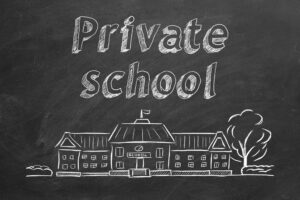The economic landscape for the middle class in many countries has undergone significant shifts due to factors like inflation, stagnating wages, and changing societal norms. This has resulted in a reevaluation of what is considered affordable for the average middle-class family. Here, we explore ten items and experiences that have become increasingly out of reach.
1. Single-Family Homes in City Centers
Owning a home in the heart of the city has become a distant dream for many middle-class families. Urban real estate prices have skyrocketed, driven by high demand and limited supply. The dream of a backyard and a white picket fence now often requires a move to the suburbs or accepting a smaller living space, such as a condominium or an apartment, as urban single-family homes drift out of financial reach.
2. College Education Without Debt
Higher education costs have risen dramatically, far outpacing the inflation rate and middle-class wage growth. As a result, attending college without incurring significant debt is becoming increasingly unrealistic. This financial burden often forces students and their families to rely on loans, which can have long-lasting impacts on financial stability and wealth accumulation.
3. Comprehensive Health Insurance
Healthcare costs have become one of the biggest financial concerns for middle-class families. Comprehensive health insurance plans that cover a wide range of medical needs without high out-of-pocket costs are becoming rarer and more expensive, pushing more people to opt for high-deductible plans that only provide basic coverage.
4. Retirement Savings
Saving for retirement is a growing challenge as many middle-class individuals live paycheck to paycheck. Factors such as higher living costs, the need to support aging parents or adult children, and the lack of employer-sponsored pension plans contribute to the difficulty in setting aside adequate funds for the golden years.
5. Leisure Travel
Leisure travel is becoming a luxury that not all middle-class families can afford. The costs associated with vacations, including flights, accommodations, and activities, have increased, making it harder to budget for travel. This shift has led many to seek alternatives like staycations or short, local trips instead of more extended or exotic vacations.
6. New Vehicles
The average price of new vehicles has increased substantially, making it difficult for middle-class buyers to purchase them without taking on burdensome financing arrangements. Many families now opt to keep their older vehicles longer or are turning to the used market, where prices have also been rising but remain more manageable compared to new cars.
7. Private School Education
Once a staple for the aspiring middle class, private education has become prohibitively expensive. With tuition fees climbing each year, many families are forced to rely on public schooling, which varies widely in quality depending on geographic location, further exacerbating educational inequalities. The escalating costs have made private schools an option only for the upper echelons, pushing many families to seek alternative educational opportunities or supplemental programs to enhance public education offerings.
8. Investment Properties
Buying a second home as an investment or for rental income is increasingly unrealistic for the middle class. High property prices, tighter credit conditions, and the substantial initial investment required make this wealth-building strategy less accessible than in previous decades. Additionally, the ongoing property management and maintenance expenses can deter middle-class families from investing in real estate as a secondary income source.
9. Long-Term Care Insurance
As life expectancy increases, so does the potential need for long-term care, which can be incredibly costly. Long-term care insurance, which can help cover these costs, has become increasingly expensive and out of reach for many in the middle class, leaving them vulnerable to future financial strain.
10. Disposable Income for Luxuries
With the rising cost of living, disposable income has shrunk, limiting non-essential purchases such as high-end electronics, jewelry, and dining out. Middle-class families focus more on saving and budgeting for necessities, reducing spending on items once considered routine indulgences.
The Middle Class Can’t Afford What It Used To
The shifting economic conditions that make these ten items less affordable reflect broader challenges facing the middle class. As the cost of living continues to rise without a corresponding wage increase, the middle class has to adjust expectations and reconsider what it means to live a “middle-class lifestyle.” Addressing these challenges will require not just personal financial management but also broad-based policy solutions to restore affordability and economic security.
Read More:
11 Fruits and Vegetables You Can Still Afford Even If You’re Broke
How to Find an Affordable Apartment in a Big City
Catherine is a tech-savvy writer who has focused on the personal finance space for more than eight years. She has a Bachelor’s in Information Technology and enjoys showcasing how tech can simplify everyday personal finance tasks like budgeting, spending tracking, and planning for the future. Additionally, she’s explored the ins and outs of the world of side hustles and loves to share what she’s learned along the way. When she’s not working, you can find her relaxing at home in the Pacific Northwest with her two cats or enjoying a cup of coffee at her neighborhood cafe.













Leave a Reply